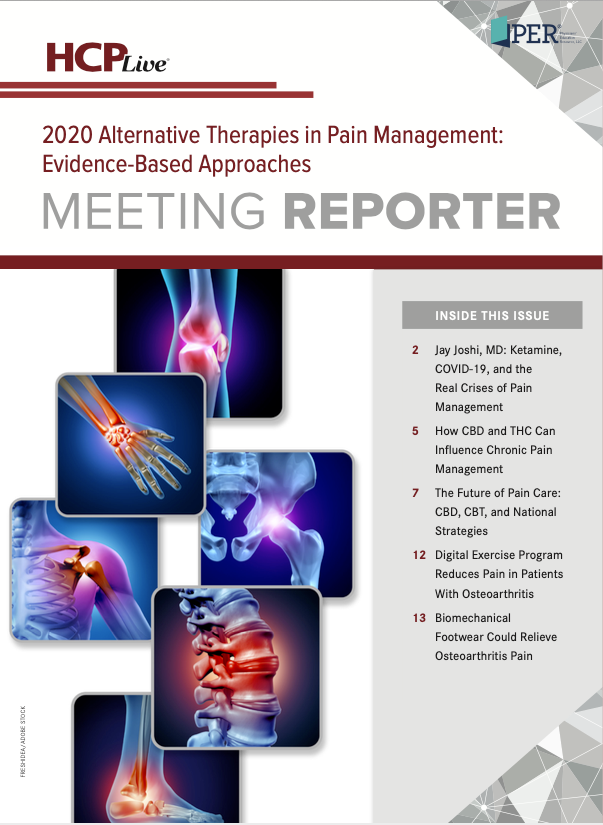Publication
Article
Supplements
Biomechanical Footwear Could Relieve Osteoarthritis Pain
Author(s):
The results must be replicated to prove clinical significance.

Peter Juni, MD, FESC
Findings of a new study showed that biomechanical footwear led to an improvement in pain among participants with knee pain from osteoarthritis compared with control footwear.
The results, although statistically significant, need to be replicated to prove clinical importance, according to Peter Juni, MD, FESC and a team of investigators.
Juni, from the Applied Health Research Center at Li Ka Shing Knowledge Institute in Toronto, Canada, and colleagues assessed the effect of a biomechanical footwear therapy versus control footwear over 24 weeks of follow-up. The team hypothesized that individually calibrated biomechanical footwear therapy could improve pain and physical function in people with symptomatic knee osteoarthritis.
The investigators enrolled men and nonpregnant women >40 years old who had symptomatic, radiologically confirmed knee osteoarthritis according to criteria from the American College of Rheumatology. The participants had knee pain last >6 months and a score of >3 on the Western Ontario and McMaster Universities Osteoarthritis Index (WOMAC) pain subscale. If a patient had a history of inflammatory rheumatic disease, had undergone knee surgery during the prior 6 months, or had a planned hip or knee surgery within 24 weeks of baseline, they were excluded from the study.
Each participant was randomized 1:1 to either the biomechanical footwear group or to the control footwear group. The biomechanical footwear consisted of 2 shoes with 2 convex adjustable rubber pods screwed to the outsole at the heel and forefoot. The control footwear was designed to have a similar appearance but with pods embedded in the transparent outsole, so they were visible but did not create a convex walking surface.
In both groups, participants underwent an initial fitting of their footwear at baseline and during recalibration at 4, 8, 12, and 16 weeks of follow-up. The participants were told to use the footwear during indoor activities for 30 minutes each day during the first week, with increases of 10 minutes per week on average.
At 6 weeks, participants used the footwear to walk outdoors. Participants also discontinued their regular pain medication and were told to avoid other interventions like physical therapy.
The primary outcome was knee pain at 24 weeks of follow-up assessed with the WOMAC (0=no symptoms to 10=extreme symptoms). Additional outcomes included WOMAC physical function and stiffness subscores and the WOMAC global score at 24 weeks of follow-up.
Overall, there were 220 participants randomized with a mean age of 65.2 years old and 47.3% women. Of the participants, 219 received the treatment and 96.8% completed follow-up.
At follow-up, the mean standardized WOMAC pain score improved from 4.3 to 1.3 in the biomechanical footwear group. In the control group, the score improved from 4 to 2.6 (between-group difference in scores at 24 weeks follow-up, -1.3 [95% CI, -1.8 to -.9]; P<.001).
The results were similar for WOMAC physical function subscore (between-group difference, −1.1 [95% CI, −1.5 to −0.7]), WOMAC stiffness subscore (between-group difference, −1.4 [95% CI, −1.9 to −0.9]), and WOMAC global score (between-group difference, −1.2 [95% CI, −1.6 to −0.8]) at 24 weeks of follow-up. There were 3 serious adverse events in the biomechanical footwear group compared with 9 in the control group (2.7% vs 8.3%), but none were related to treatment.
Additional research is needed to assess the long-term efficacy and safety, along with replication, before the results are deemed clinically valuable.
The study, “Effect of Biomechanical Footwear on Knee Pain in People With Knee Osteoarthritis,” was published online in JAMA.






